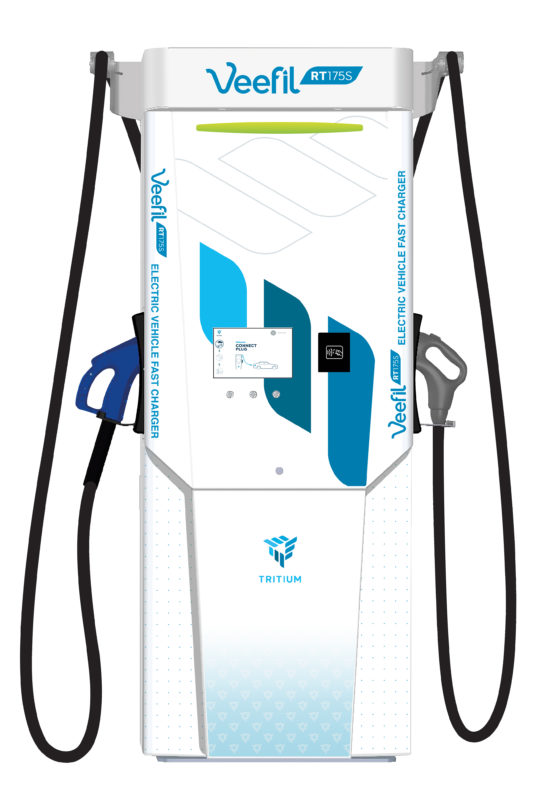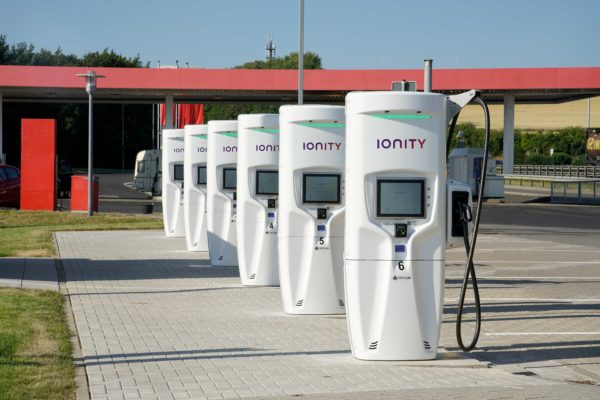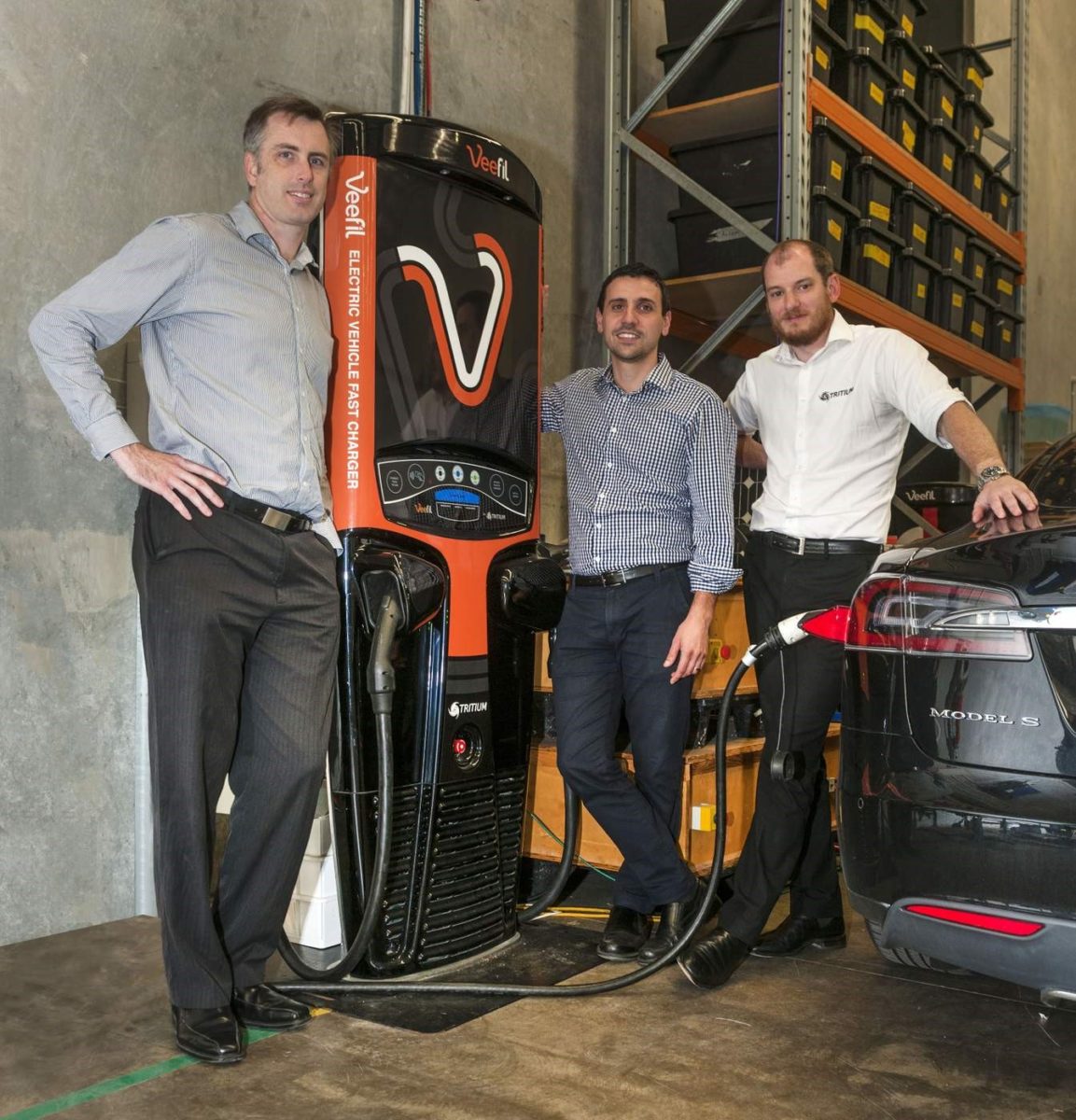On December 30, The Australian newspaper reported, Tritium electric vehicle charging station company loses $50 million.
The homegrown innovator’s recent milestones — establishment of Tritium E-Mobility Innovation Centre in Amsterdam to complement R&D carried out at its Brisbane base, recent growth in sales, success in securing growth capital, partnerships supporting growth in Europe and the US, the opening of a US innovation, testing and manufacturing facility — seem to paint a different picture to the headline.
Tritium’s 2019 financial accounts, lodged with ASIC the Australian corporate regulator, do show a $50 million loss, and forecast a net cashflow-positive result in 2020 subject to improvement in its sales margins. The accounts also reveal that the company is in negotiations with lenders to arrange further funding through third-party bonds.
pv magazine spoke with Tritium CEO David Finn, one of the three founders of Tritium, about the company’s prospects and challenges for the coming year.
pv magazine: What’s the context for your 2019 financial result?
David Finn: We reported a loss, but from my point of view it’s an investment in setting up facilities in different parts of the world, in Europe and America; and growing our research and development team. We’ve got new products coming through this year that are really going to transform the revenue growth of the organisation, and we’ve built our sales and capability on the ground in the US and Europe.
So we’ve made a lot of investments that will put us in a very good position to keep the revenue growth that we’ve been achieving over the past five years — we’ve been almost doubling year on year in terms of revenue. You have to be investing ahead of that growth otherwise you start to disappoint your customers, because you don’t have the ability to support the larger sales you’re making for the next year.
The loss has to be reported, but when you’re in a growth phase, you spend money to grow. We raised money to cover that, and we’ve put ourselves in a really good position going forward.
What can you tell us about Tritium’s new product developments?
DF: We have some very interesting announcements to come out, and I can’t talk about all of them yet, but we’re kicking off the New Year with a new product into the US: the RT175s which can add 110 miles [nearly 180 km) of range to an electric vehicle in just 10 minutes.

Photo: Tritium
Later in the year we have a re-spin of our existing Veefil 50 kW DC fast charger, which was originally designed by Tritium founders all the way back in 2012. It really leapfrogged the marketplace when we launched it in 2014, and has been in high demand in the past few years. But we’re looking forward to bringing in the new version of the product as a scaleable platform. The platform will run from 50 kW through 300 kW and 600 kW fast chargers with some really nice new features.
Last year we launched our network-management platform, which allows customers to see how their network of hardware is performing and gain insights into customer experience. That platform is called Pulse and it sits in the cloud. It’s part of the investment we’ve made over the past year — our entry into software as a service.
Tritium is also getting more involved in supporting our products in the field. Last year we signed our first service-level agreement.
So this year all of that will be rolled together: the newer versions of products that are much more modular and easy to service in the field, and that incorporate all the learnings that we’ve picked up over the years; the software to see what’s going on; and the service offering.
What makes Tritium stand out in the EV-charging market?
DF: From the beginning we were very focused on making sure that we constantly increased the reliability of the product and that the planned service interval time was being pushed out as much as possible. Unlike petrol bowsers in a service station, EV chargers don’t generally have an attendant looking after them. They’re distributed in car parks, in shopping centres, and other public places so they need to be autonomous. They have to work for as long as possible before they need servicing.
Using technology that we developed over the years, we’ve completely sealed up the electronics base against ingress of dust or corrosive air. That extends the service interval of the product. With our competitors’ products you need to change things like air filters or parts that might corrode in salty air near the coastline — we don’t have that. A lot of our customers have seen the benefit of Tritium’s lower service costs and lower total cost of ownership.
Going down that path also kept our product very slim-lined, and it has a very small footprint. It means it can fit in front of a car space, and doesn’t need to have special areas carved out for it. Real estate is quite expensive in built-up city areas, so having that very small footprint has also been a big selling feature for us.
And we’ve paid a lot of attention to making sure our chargers are intuitive and approachable, that they fit with the built environment and look really great. It’s surprising how much that sells the product when people look at it and go, “Well, it’s something I could see in front of my building.” Our competitors’ products still look like they belong in a factory.
Tritium business is linked to the uptake of EVs. How do you see that increasing in coming years?
DF: It’s not something that can happen quickly. It takes 20 years to turn over the existing fleet of vehicles. And new-car sales of EVs may have gone through 50% of sales in Norway, but in other parts of the world they’re still in low single digits.
The rate of transition will accelerate over coming years. We’re also seeing fleet opportunities open up — whether that be bus fleets or taxi fleets or lease vehicles. There are really big opportunities in that space as well.
In mid-2019 we signed a deal with Stäubli Electrical connectors and SSA Marine to supply and install 33 of our new RT175s at the Port of Long Beach, to power SSA Marine’s new fleet of electric-drive terminal tractors. That’s a cutting-edge project, with the Stäubli QCC enabling zero-touch automatic charging of the fleet.
What kinds of strategic alliances is Tritium forging for future growth?
DF: We see ourselves continuing to support larger network operators, who have either negotiated access to the real estate for operating a network, or already have it, as is the case with a lot of big oil companies that are starting to see their petrol sales impacted by EV sales. Circle K in Norway has seen 10% reduction in fuel sales because there are that many vehicles on the road. So oil companies are well aware of the fact that they need to transition.
In late 2018, Gilbarco Veeder-Root, the largest petrol dispenser company in the world became a 20% stakeholder in Tritium. They have very strong relationships with all the big oil companies. In terms of engaging with big oil and building a good rapport with them, Gilbarco assists the process for Tritium.
When you’re talking hundreds of billions of dollars of fuel sales, if you can have a few per cent of that in electricity sales, it’s big business for Tritium and it continues to fuel our revenue growth.
Is Tritium’s profile bigger in Europe than it is in Australia?
DF: One of the biggest projects we’ve been involved in was the rollout of the Ionity network of 400 planned sites in Europe, each with up to six chargers, and it was mostly Tritium product going in there. Our product is a big part of Ionity’s cutting edge technology, so we’ve built up a really, really good brand in Europe due to our involvement in that project. It’s put us in a really strong position in Europe.
And we have both Chargefox and EV Networks rolling out high-power charging across Australia. Both are customers of Tritium, one doing about 43 sites, the other doing about 22 initially, but they both have grander plans.

Image: Tritium
What could the Australian Government do to encourage uptake of EVs in the passenger-vehicle market?
DF: Making it easier to get the vehicles here on the ground is the key thing, and that might be through lowered tariffs.
Infrastructure is a big factor, and I think that’s already happening. ARENA is helping to fund the Evie and Chargefox networks to roll out their infrastructure. The effect is twofold. When you have infrastructure on the ground, people see it and it raises awareness. Awareness is a big piece: about 50% of the population have no idea what an EV can do and whether they can use it as a normal vehicle. The second piece is once you do get your EV it’s really important to be able to use it, to have the freedom to get in it and just drive — you need that infrastructure.
And then there’s the possibility of incentives for driving an EV. The incentive doesn’t have to be huge. Sometimes just getting access to T2 or T3 lanes is enough, or some cheaper parking in the inner city — anything like that can sway people to buy a zero-emissions vehicle, rather than a petrol vehicle.
We’re also going to benefit from what’s happening overseas. Penalties on European vehicle manufacturers for not getting enough of their fleet with CO2 emissions below 95 grams per km have really driven manufacturers to bring more EVs into existence. They’re running out of options in terms of reducing emissions from their standard diesel and petrol vehicles, so the only way is to get their fleet emissions down is to get more zero emissions vehicles in there.
They’ll have to bring new vehicles into the marketplace and Australia will benefit from that.
I think to actively not get in the way is the important thing for the Government to do.
This content is protected by copyright and may not be reused. If you want to cooperate with us and would like to reuse some of our content, please contact: editors@pv-magazine.com.









2 comments
By submitting this form you agree to pv magazine using your data for the purposes of publishing your comment.
Your personal data will only be disclosed or otherwise transmitted to third parties for the purposes of spam filtering or if this is necessary for technical maintenance of the website. Any other transfer to third parties will not take place unless this is justified on the basis of applicable data protection regulations or if pv magazine is legally obliged to do so.
You may revoke this consent at any time with effect for the future, in which case your personal data will be deleted immediately. Otherwise, your data will be deleted if pv magazine has processed your request or the purpose of data storage is fulfilled.
Further information on data privacy can be found in our Data Protection Policy.